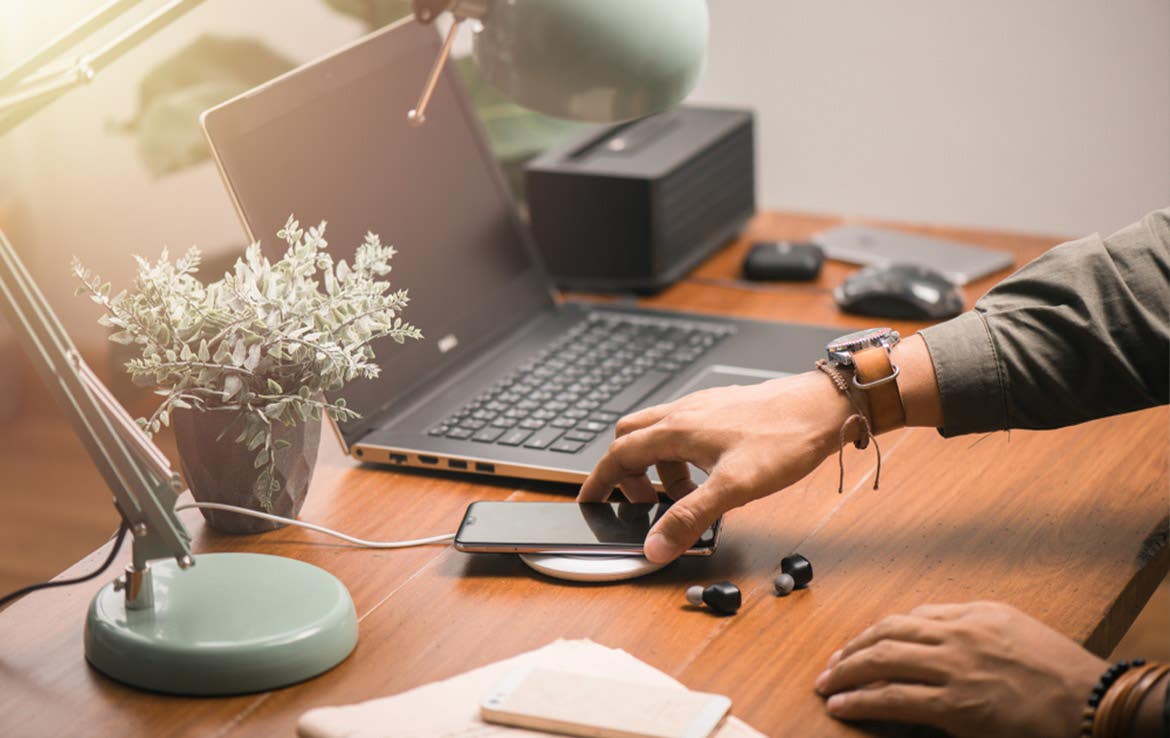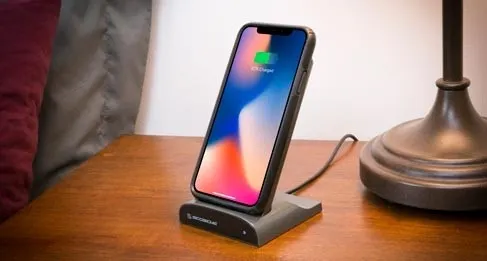What Is a Qi-Enabled Device?

Source: Nor Gal/Shutterstock.com
Qi-enabled wireless charging has become the standard for flagship, and now even mid-range phone models. But what are they, and more importantly, what are the advantages and disadvantages of such a wireless charging device? In this guide, Scosche breaks down what Qi wireless charging means and why it is so convenient.
So what is a Qi-enabled device? Glad you asked.
What Is Wireless Charging?
Before we dive into discussing Qi-enabled devices, we must first understand wireless charging. Wireless chargers, whether it’s a flat, round pad (or puck) for your phone or tablet, or a case for your Apple® Watch or AirPods®, provide a way to charge electronic devices. Typically the device needs to be placed directly on it, or magnetically attached to it.
Wireless charging is facilitated by two coils that create an electromagnetic inductive field, which transfers power from one device to another over the air. The first transmitter coil is set within the charging pad, while the second transmitter (receiver) rests inside the phone or battery-powered device.
Wireless charging charges batteries through electromagnetic induction energy transfer, which has been coined Qi (pronounced chee) after the Chinese word for “air energy flow.” It works well for smaller electronic devices that don’t require vast amounts of power — phones and smartwatches and earbud charging cases. Most phone manufacturers, including Apple, Samsung, Google, etc., use the Qi wireless charging standard. The Qi standard was developed by a group of electronics manufacturers working with the Wireless Power Consortium or WPC.
What Is a Qi-Enabled Device?
So now that you understand what wireless charging and Qi is, what makes a Qi-enabled device? Qi-enabled devices have smaller components than many wireless chargers. Plus, it uses inductive charging and, as of 2014, the Qi 1.2 standard began to use resonant charging, too. This alteration is what made Qi chargers’ backward compatibility a possibility. At the end of the day, Qi chips became standard in most phones.
If your phone has the logo, it can charge wirelessly with the Qi standard.
Pros and Cons of Qi-Enabled Devices


The Pros of a Qi-Enabled Device
So what are some of the reasons one might switch to wireless charging with their Qi-enabled device? Let’s explore:
Fewer Cables and Cleaner Look: With a Qi Charger, your desk, nightstand or vehicle can be clutter-free. With a cleaner working space, phone cables and even your smartwatch or earbuds cables, you can breathe a little easier. All you have to do is place your phone on the Qi-charger for a cleaner, convenient charge.
No Damaged Wires: Cables can become damaged and frayed over time. But when you tuck them away and use them only when necessary, it can preserve them and lengthen their lifespan. This is important not just for individuals, but also reduces electronic waste, which is a growing problem with the electronics industry.
Android and Apple Compatible: Qi wireless chargers — the industry-standard — don’t care whether you are team Apple or Android. It will charge your device regardless. So if one person in the household has a Samsung Galaxy while the other has an iPhone, it makes no difference and you never have to swap between USB-C and Lightning cables. It also means you don’t have to buy different chargers, saving you cash in the long run.
The Cons of a Qi-Enabled Device
While there are lots of excellent pros and benefits of a Qi-enabled device, it does come with a few downsides.
Slower Charging: Wireless charging is clutter-free, but it usually does take Qi-enabled devices longer to charge than it would when plugged directly into a wall or vehicle outlet. Fast charging is available on wired chargers, but wireless chargers, and especially Qi-enabled phones, are charging faster than they used to - up to 15W in some models.
Dedicated Placement: An inductive charger is often kept in one spot, where your phone will always go to be charged. However, if you accidentally misalign the phone on the charger, and don’t realize it, you could leave the house without a fully charged phone.
An Unusable Device: When your phone has to sit on some wireless chargers so carefully to charge, using it is not an option. But fortunately there are wireless charging stands and mounts available that hold your phone so that you can use it hands-free while it wirelessly charges.